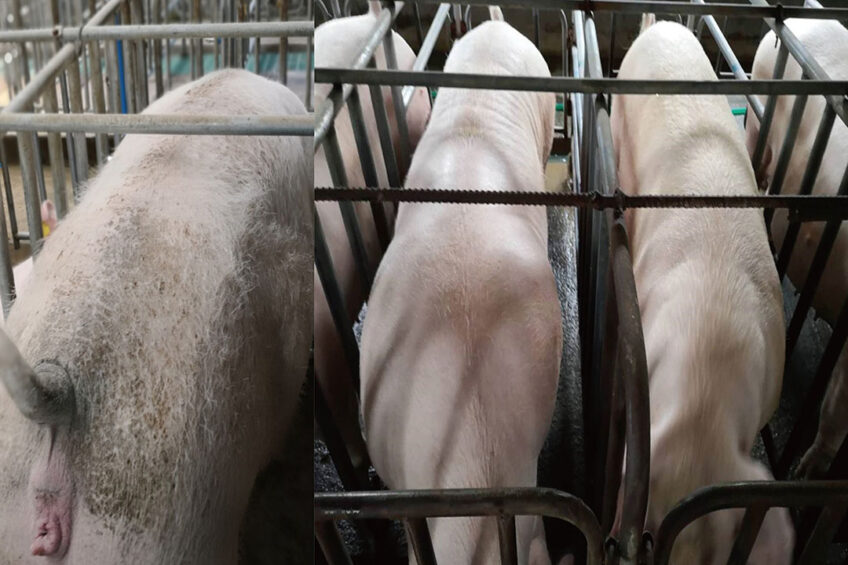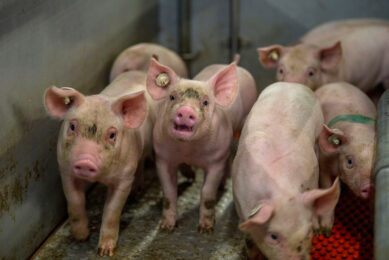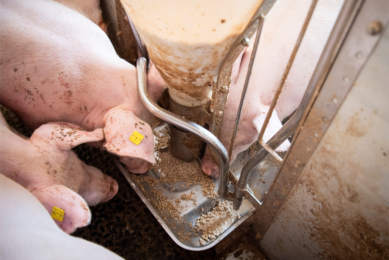Enzymatic solution for mycotoxins

Mycotoxins are toxic compounds produced by certain types of fungi that can contaminate feed and feed ingredients with detrimental effects on pig performance. Effects of mycotoxins on swine include reduced feed intake, altered nutrient utilisation, impaired growth performance, immune system suppression, reproductive issues, and organ damage.
MYCOTOXIN SPECIAL 2023 – read all articles
Mycotoxins can cause a decrease in feed intake. Affected animals may show reduced appetite, leading to lower nutrient intake and slower growth rates. They can interfere with nutrient absorption and utilisation by swine and affect the digestive system, impairing the absorption of essential nutrients and result in poor feed conversion efficiency as well as growth and reproduction. It leads to delayed market readiness and economic losses for swine producers. Mycotoxins may also suppress the immune system in swine, making them more susceptible to diseases. This can increase the incidence of secondary infections and reduce overall health and well-being.
Some mycotoxins, such as zearalenone (ZEN,F-2), can cause reproductive problems in swine. They can disrupt the oestrous cycle, cause infertility, foetal resorption, and stillbirths, leading to decreased litter sizes and reproductive losses. Certain mycotoxins, such as aflatoxins (AFs), can cause damage to vital organs like the liver and kidneys in swine. Prolonged exposure to high levels of mycotoxins can lead to chronic health issues and even mortality. It is important for swine producers to implement proper quality control measures, such as regular monitoring of feed ingredients and finished feed, to minimise the risk of mycotoxin contamination. Testing feed samples for mycotoxins and implementing strategies to mitigate their impact.
Synergistic effect
In 2022, the mycotoxin research laboratory of Life Rainbow Biotech in Taiwan reported that more than 60% of feed samples collected in Taiwan were contaminated by different kinds of mycotoxins. Among the samples tested in 2022, deoxynivalenol (DON) had the highest contamination rate (86.5%), followed by aflatoxins with a contamination rate higher than 80% (Table 1). Nearly 93.2% of samples detected 2 or more kinds of mycotoxin. Consumption of more than 2 mycotoxins, even at low doses, the synergistic effect of the 2 toxins can still harm the health of animals. For example, exposure to fumonisins (FUMs) and deoxynivalenol at the same time will not only locally affect the function of the small intestine but will further damage the protective barrier of the intestine, weaken the defence against pathogens, and comprehensively affect the growth performance, immunity, and reproductive performance of sows.
The use of mycotoxin adsorbent is the most common method for mycotoxicosis due to the effectiveness and economic benefits. However, lots of research have shown that the adsorbents worked on the needed nutrients at the same time and caused unexpected deduction of nutritional value of feed. More and more pig producers choose enzymatic solution for mycotoxin aiming to detoxify mycotoxins while preserving the nutritional value of the feed. This is important to ensure that the swine receive adequate nutrients for optimal growth and performance.
Enzymes bind and degrade
Enzymatic solution is one of the strategies used in mycotoxin prevention programmes for swine. Working in gastrointestinal tract, enzymes can be used to degrade or detoxify mycotoxins both from contaminated feed and environment, helping to reduce their negative effects. Different types of enzymes can be used depending on the specific mycotoxin and the target substrate either binding to mycotoxins, reducing their bioavailability and preventing their absorption in the digestive tract or degrading mycotoxins into less toxic or non-toxic metabolites. Enzymatic solutions can be tailored to target specific mycotoxins commonly found in swine feed, such as aflatoxins, deoxynivalenol, zearalenone, and ochratoxin A (OTA).
The efficacy of enzymatic solutions for mycotoxin prevention can vary depending on the specific enzyme and mycotoxin involved, as well as the conditions of the feed and the feed processing methods. The patented mycotoxin degrading enzyme, TF301, has the advantage of specifically decomposing the functional groups of mycotoxins. Combining epoxidoreductase, esterase, and peptidase, TF301 can cut the epoxidation bond on trichothecenes, act on the ester bond on zearalenone and fumonisins and the peptide bond on ochratoxin A, providing comprehensive protection for pigs against mycotoxin.
Combination of tools
It is important to select enzymes with proven efficacy against the target mycotoxin and to follow the recommended dosage and application protocols. Enzymatic solutions can be used in combination with other strategies, such as physical methods (heat treatment, irradiation), and the use of adsorbents or binders, to enhance mycotoxin control, or even with immunomodulatory agents, such as mannooligosaccharides (MOS) to mitigate immune damage caused by mycotoxins (Table 2). These combined approaches can provide a more comprehensive and effective management programme. Along with proper feed sourcing, storage, and monitoring, enzymatic solution plays an important role on mycotoxin management. Regular mycotoxin testing of feed ingredients and finished feed is crucial to assess the effectiveness of enzymatic solution and overall mycotoxin control. Consulting with an animal nutritionist or veterinarian is advisable to determine the most appropriate mycotoxin solution approach for your specific swine production system.






